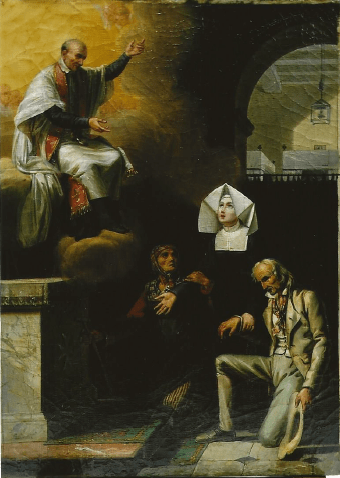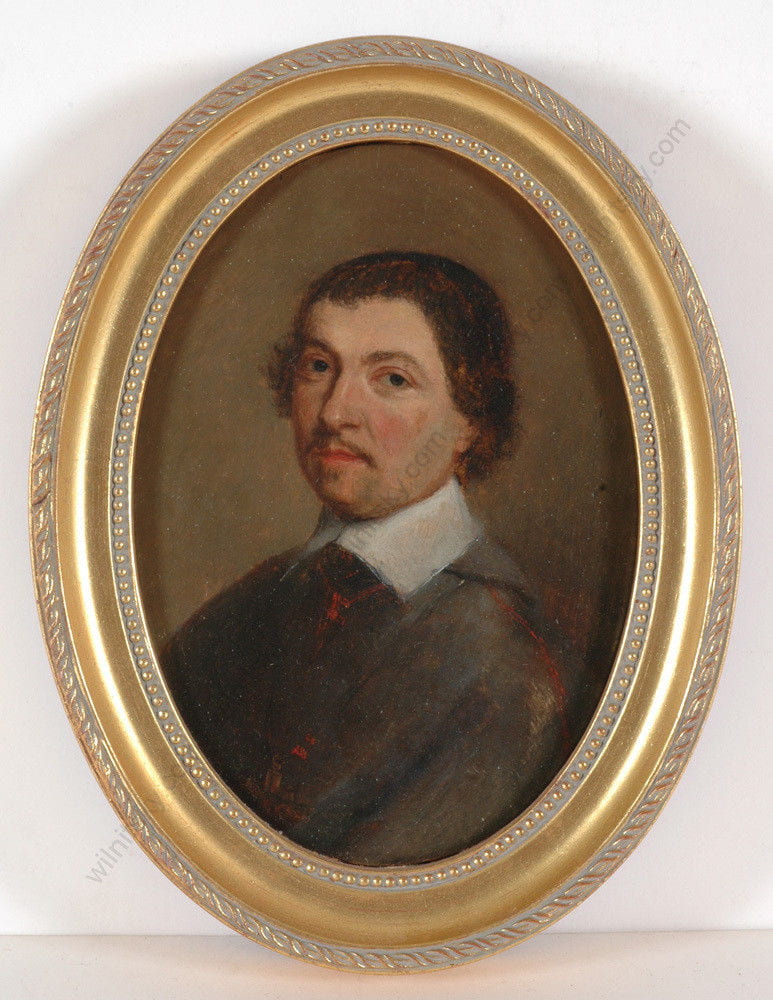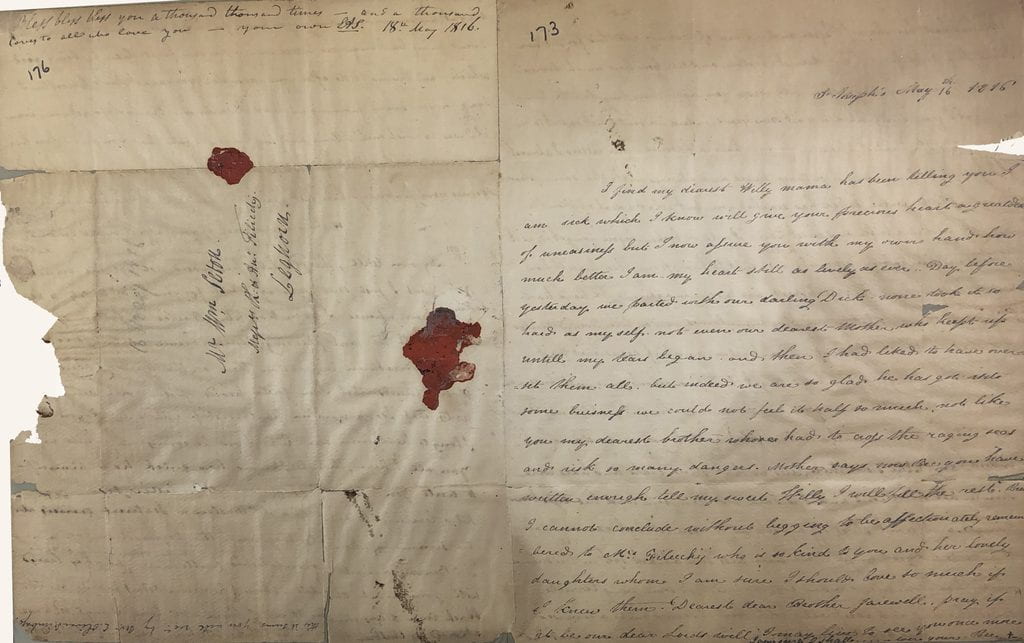The Vincentiana Collection at DePaul Universit’s Archives and Special Collections Department has recently acquired a copy of the 1657 announcement about the establishment of the Hospital General of Paris. This controversial institution sought to assist the masses of the urban poor in Paris, but to do so only by depriving the poor of their liberty. The King, Archbishop of Paris and Parlement announced that the Lazaristes and Daughters of Charity would have spiritual responsibility for the institution. However, they had not consulted Vincent de Paul. After consultation Vincent would graciously decline the offer citing a paucity of confreres and sisters. See for example Coste, CCD: 6:257-258, 268-269, 274-275. The booklet had announced: “Les Peres Missionnaires de saint Lazare dont l’on scait assez la grace, ont este establis pour avoir soin du spirituel, sous l’autorite de Monseigneur l’Archevesque de Paris, & les filles de la Communaute de Madamoiselle le Gras, dont la bonne conduite est aussi connue, one este acceptees por le service du sexe.”
Author: bcicirel
What Must Be Done: Confronting Fast Fashion
Have you ever asked yourself where your clothes comes from? Learn the ethical implications of today’s fast fashion culture and how to make a positive impact. The solution starts with YOU and your university is a great place to start!
Newsnote: 19th century Vincentian painting acquired
The Vincentiana collections at DePaul University’s Archives/Special Collections has acquired a 19th century Vincentian painting by the artist Andre-Joseph Bodem. (1791-1830?) Believed to have been a commission for l’hopital Saint-Joseph in Compeigne, France run by the Daughters of Charity. The hospital was built in the second quarter of the 19th century. The painting is in a hospital setting. In the background right a ward with numbered beds can be seen. Many of these pre-modern religious hospitals would have separate wards for men and women. The wards would flank the chapel. At mass and other prayer times the curtain separating the wards would be pulled back so that the patients could see and hear the religious services. This hospital chapel had an altar dedicated to Saint Vincent de Paul. The Daughters of Charity is flanked by a representative old woman and man. They surely represent the hospital’s patients. The dress of the couple supports a c. 1825 date for the painting. Bodem’s records indicate commissions for several paintings of Saint Vincent de Paul. One in particular is identified for the hospital at Compeigne. Our presumption is that this is that painting. Dimensions: Height: 18.5″ Width: 13.25″ The painting was restored by Faye Wrubel of “2 Preserve Arts, Inc.”
Newsnote: Dutch carving of Saint Vincent de Paul acquired. Artist: Johannes Petrus Maas
The Vincentiana Collection at the Archives & Special Collections Department of DePaul University’s John T. Richardson Library recently acquired a carved oak statue of Vincent de Paul with a foundling. The work by the Dutch artist Johannes Petrus Maas (1861-1941) is 21 inches tall. It joins the extensive Vincentian statuary collection at the university.
Newsnote: Early Portrait of the Cardinal de Retz (Jean-Francois Paul de Gondi) acquired
The Vincentiana Collection at the Archives and Special Collections of DePaul University’s John T. Richardson Library has recently acquired a portrait of Jean-Francois Paul de Gondi the famous Cardinal de Retz (1613-1679) The Cardinal, who knew Vincent de Paul from his birth served as archbishop of Paris from 1654-1662. He was a famous Frondeur and memorist. The portrait is attributed to the Dutch painter Jan de Bray (1630-1697).
VHRN Newsnote: Second Volume of the History of the Daughters of Charity published by Fayard
Histoire des filles de la Charité vol.2
Fondée par saint Vincent de Paul et Louise de Marillac au xviie siècle, la petite communauté parisienne a rapidement gagné la France des villes et des villages pour devenir la principale congrégation de sœurs actives à la fin de l’Ancien Régime. « La rue pour cloître » : telle était la règle de vie originale de ces femmes, ni cloîtrées ni mariées mais célibataires vouées au service des pauvres.
Après un premier tome consacré à la période moderne, Matthieu Brejon de Lavergnée aborde ici les deux siècles suivants, entre Révolution française et Deuxième Guerre mondiale. « Le temps des cornettes » : c’est celui d’un nouveau contrat social entre États et Églises pour répondre aux pauvretés de l’âge industriel comme à la forte demande d’éducation, de santé et de loisirs des sociétés urbanisées. Sensibles à la conjoncture politique, les Sœurs de Saint-Vincent-de-Paul connaissent aussi exil et martyre en France, au Mexique ou en Chine. L’échelle des cornettes est désormais globale, de l’Europe à ses espaces coloniaux comme aux nouveaux mondes américains. Missionnaires, elles exportent un culte marial si français depuis les apparitions de Catherine Labouré en 1830. Mais encore institutrices, infirmières, éducatrices ou syndicalistes, elles accompagnent les nouveaux fronts de la professionnalisation féminine au xxe siècle. Elles contribuent ainsi à redessiner les rapports de genre au sein de sociétés dures aux femmes. Féministes, les bonnes sœurs ? La question mérite d’être posée.
C’est tout l’intérêt de cet ouvrage, appuyé sur de riches archives, que d’évoquer avec rigueur le rôle capital joué par des générations de femmes qui ont lié horizon spirituel et travail social.
Matthieu Brejon de Lavergnée est agrégé et docteur en histoire, maître de conférences habilité à la Sorbonne. Il est spécialiste d’histoire sociale et religieuse, et s’attache en particulier à une histoire de la charité, de la philanthropie et de l’assistance.
Newsnote: New book published on the history of Saint-Lazare and its surrounding neighborhood
Du clos Saint-Lazare à la gare du Nord
Histoire d’un quartier de Paris
La léproserie Saint-Lazare devint en 1632 le berceau de la congrégation de la Mission que Saint Vincent de Paul avait fondée quelques années auparavant. Cet espace subit d’importantes transformations au cours des XIXe et XXe siècles. C’est l’histoire de la maison Saint-Lazare et de son clos que ce livre tente d’éclaircir, non pas tant la prison pour femmes, que l’économie de la maison mère d’une des principales congrégations de la France de l’Ancien Régime et son adaptation successive à différents usages.
Avec le soutien de l’université Paris-Est Créteil Val-de-Marne (UPEC).
Coédition Comité d’histoire de la Ville de Paris.
2018
Frédéric Jiméno, Karen Bowie et Florence Bourillon (dir.)
![]()
Domaine : Histoire | Histoire longue durée
Collection : Histoire
![]()
Presses Universitaire de Rennes
Format : 16,5 x 24 cm
Nombre de pages : 256 p.
Illustrations : Couleurs et N & B
ISBN : 978-2-7535-6612-5
Disponibilité : en librairie
Prix : 25,00 €
Newsnote: Interesting Vincent de Paul 19th century holy card
The Vincentiana Collection at DePaul University’s Archives and Special Collections recently acquired this interesting mid-19th century holy card depicting Vincent de Paul blessing his “double family” of the Congregation of the Mission and the Daughters of Charity, the lay people in the foreground can be presumed to represent members of the Ladies of Charity and the Society of St. Vincent de Paul.
The legend at the bottom:
“Continuing in his Spirit.”
“Saint Vincent blesses his two families in the name of the charity of Jesus Christ.”
Newsnote: Rare Seton Letter Acquired
DePaul University
Vincentian Studies Institute of the United States
The Vincentian Studies Institute of the United States located at DePaul University in Chicago, Illinois, is happy to announce the acquisition of a four-page manuscript Seton family letter. The handwritten letter is dated May 18, 1816. It is addressed to William Seton (1796-1868) at Leghorn (Livorno) Italy with portions written by his two younger sisters and his mother. The first page is from Rebecca Seton (1802-1816). The second page is from Catherine (Kit) Seton (1800-1891). Saint Elizabeth Seton adds 18 lines on the final two pages. The Seton autograph of this letter is found as 7.25 in Elizabeth Bayley Seton Collected Writings, volume 2, p. 396-397. The editors of this series noted the letter was based on a photo-copy, and the location of the original was unknown. Just over two hundred years after it was written, this precious document returns to the possession of the Vincentian family. The letter will join the extensive Vincentiana Collection in the Archives and Special Collections of DePaul University’s, John T. Richardson Library.
Newsnote: Capucines Convent, Paris 17th century
This postcard recently added to the Vincentiana Collections at DePaul University’s Archives and Special Collections depicts part of the famous Convent of the Capucines to which Louise de Marillac was denied admission. The Capucines had arrived in Paris representing the cloistered women of the Capuchin reform which in the previous century had been introduced into the Franciscan order. The large convent was located at the site of the present Place Vendome in Paris. The depiction above is from 1705.








